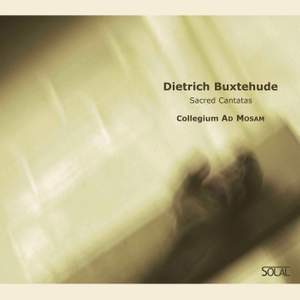Collegium AD MOSAM was founded in 1994 on the initiative of artistic leader Huub Ehlen. The ensemble is a select company of professional singers, soloists and instrumentalists, each an ambassador for baroque music in an authentic and – importantly – powerful way. Ad Mosam can perform in a variety of combinations as choir, orchestra, solo ensemble or consort. The orchestral players are almost without exception members of famous ensembles. A distinguishing characteristic of Ad Mosam is that the vocal soloists also sing the choir parts, as was often the case in the Baroque.
Alongside the great works such as the Bach passions, the Lutheran Masses, the Maria Vespers of Monteverdi and the Missa Salisburgensis of Biber, thematically-based programs are often presented. This approach has led to concerts in combination with jazz musicians, poets and dancers. Although the Collegium performs widely in European Limburg, it is also a regular guest at the Festival of Flanders, the Festival Musica Sacra, and in Amsterdam.
Collegium Ad Mosam is included in the Provincial Culture Plan of Limburg, and receives a subsidy from the province. The ensemble is also subsidised by the council of Sittard-Geleen, where the group is based, and enjoys partnerships with a number of sponsors.
Dietrich (Diederik) Buxtehude (Oldesloe 1637 – Lübeck 1707) came from a respectable Danish family of organists. He must have received his initial musical training from his father Johannes, for 30 years organist at the Saint Olau Church in Helsingor. After his study in Copenhagen – we know very little of his musical education – he should, by tradition, have succeeded his father in Helsingor, but it seems the young man had greater ambition. In 1668 he was appointed successor to Franz Tunder at the Marienkirche in Lübeck, a wealthy Hanseatic League city with an exceptional musical infrastructure.
Alongside organist, he was also Werkmeister, an administrative church post that included responsibility for training organists and the organisation and direction of secular concerts, but stopped short of directing the larger choral performances in the church – a task that belonged to the Cantor. The secular concerts had existed during Tunder’s period, and became a Lübeck tradition, thanks to the traders. Buxtehude also ran the Abendmusiken (Evening Music), and moved the Abendspiele (Evening Playing) to Sunday. He had more faith in the generosity of the wealthy burgers than the travelling merchants.
The post of Werkmeister in Lübeck was one of the most important functions in all North German church music, and Buxtehude was well known while he was alive, famous not only for his organ-playing (his improvisations were legendary), but also for his composing. He was remembered only as an organist 25 years after his death, and almost forgotten 25 years later still.
It seems that, once appointed, he never left the post at Lübeck. He held a great attraction for young musicians, including Mattheson and Händel, and we all know that Johann Sebastian Bach gained much from the great master: against all the rules, he managed to extend a study trip to Lübeck to four months. The result is unmistakenly recognisable in some of his cantatas, as, for example, in the fragile opening sonata of the Actus Tragicus (BWV 106), but also in the larger, celebratory works.
The works in this recording are some of the most beautiful examples of Buxehude’s multi-voice compositions.





